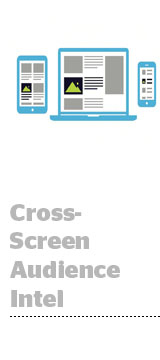
One would think Time Inc., which under new parent company Meredith will lay off 1,200 as well as restructure its ad sales org, wouldn’t be in the market for new vendor implementations.
Nevertheless, the publisher is testing a publisher tool called Audience Manager Reporting for Publishers, which Adobe launched Tuesday.
The reporting tool, which is built into Adobe’s data management platform (DMP), Audience Manager, is designed to unify behavioral data like display or search clicks with a publisher’s first-party data sets so publishers can identify more attributes around their readers.
Using Reporting for Publishers, content owners can take their behavioral segments, pop them into Audience Manager and layer in demographic data to make their ad inventory more valuable, said Ben Gaines, group product manager for Adobe Analytics.
A publisher might want to know, for instance, which articles and videos 18-25-year-olds consumed compared to another demographic or audience.
“When you’re using analytics to determine what people do on the site or app, you can start to take these behavioral segments and share them to Audience Manager to power your ad inventory,” Gaines said.
The tool is designed to make it easier to determine identity, not from a PII perspective, but in terms of more precise segmentation – understanding, for instance, that a site visitor is a married professional from Manhattan who exhibits certain buying patterns.
That type of segmentation is precisely what Time Inc. is doing with its DMP: shedding light on content consumption patterns across different user segments, said Judith Hammerman, SVP of data commercialization and programmatic at Time Inc.
“Having a people- or identity-based approach is something marketers have told us is really important to them,” Hammerman said.
Time Inc. first began using Audience Manager in 2017 when it migrated from another DMP.
Its goal was to activate data for advertiser clients, many of whom were Adobe Audience Manager users themselves who wanted to work with fewer platforms, Hammerman said.
Adobe claims it’s more efficient when publishers and advertisers use the same system to swap data.
“When you’re on the same foundational technology, it’s faster time to market to activate those segments,” said Rakhi Patel, senior product marketing manager for Adobe Audience Manager.
Of course, it’s fair to wonder whether Time Inc.’s Adobe implementation will last long-term under Meredith, given recent uncertainty around the future of Time Inc.’s publishing brands.
Hammerman declined to comment on Meredith’s future plans for audience data as the companies integrate.
This post was syndicated from Ad Exchanger.

More Stories
DoubleVerify Threatens to Sue Adtech Watchdog Check My Ads For Alleged Defamation
Stuff surges ahead in first quarter
How Linda McMahon’s “A.1.” Gaffe Sparked a Viral Campaign for Steak Sauce